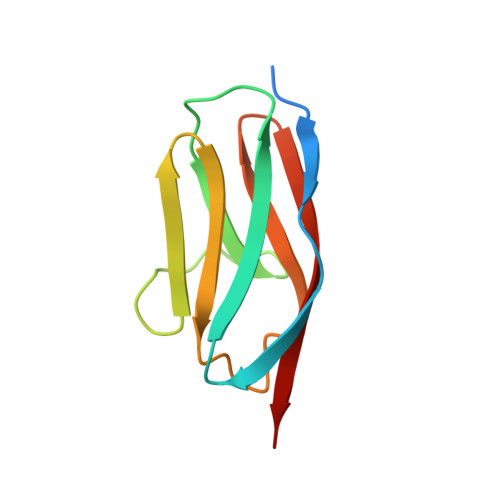Immunoglobulin-like modules from titin I-band: extensible components of muscle elasticity.
Improta, S., Politou, A.S., Pastore, A.(1996) Structure 4: 323-337
- PubMed: 8805538
- DOI: https://doi.org/10.1016/s0969-2126(96)00036-6
- Primary Citation of Related Structures:
1TIT, 1TIU - PubMed Abstract:
The giant muscle protein titin forms a filament which spans half of the sarcomere and performs, along its length, quite diverse functions. The region of titin located in the sarcomere I-band is believed to play a major role in extensibility and passive elasticity of muscle. In the I-band, the titin sequence consists mostly of repetitive motifs of tandem immunoglobulin-like (Ig) modules intercalated by a potentially non-globular region. The highly repetitive titin architecture suggests that the molecular basis of its mechanical properties be approached through the characterization of the isolated components of the I-band and their interfaces. In the present paper, we report on the structure determination in solution of a representative Ig module from the I-band (I27) as solved by NMR techniques. The structure of I27 consists of a beta sandwich formed by two four-stranded sheets (named ABED and A'GFC). This fold belongs to the intermediate frame (I frame) of the immunoglobulin superfamily. Comparison of I27 with another titin module from the region located in the M-line (M5) shows that two loops (between the B and C and the F and G strands) are shorter in I27, conferring a less elongated appearance to this structure. Such a feature is specific to the Ig domains in the I-band and might therefore be related to the functions of the protein in this region. The structure of tandem Ig domains as modeled from I27 suggests the presence of hinge regions connecting contiguous modules. We suggest that titin Ig domains in the I-band function as extensible components of muscle elasticity by stretching the hinge regions.
Organizational Affiliation:
EMBL, Meyerhofstrasse 1, D-69012 Heidelberg, Germany.














